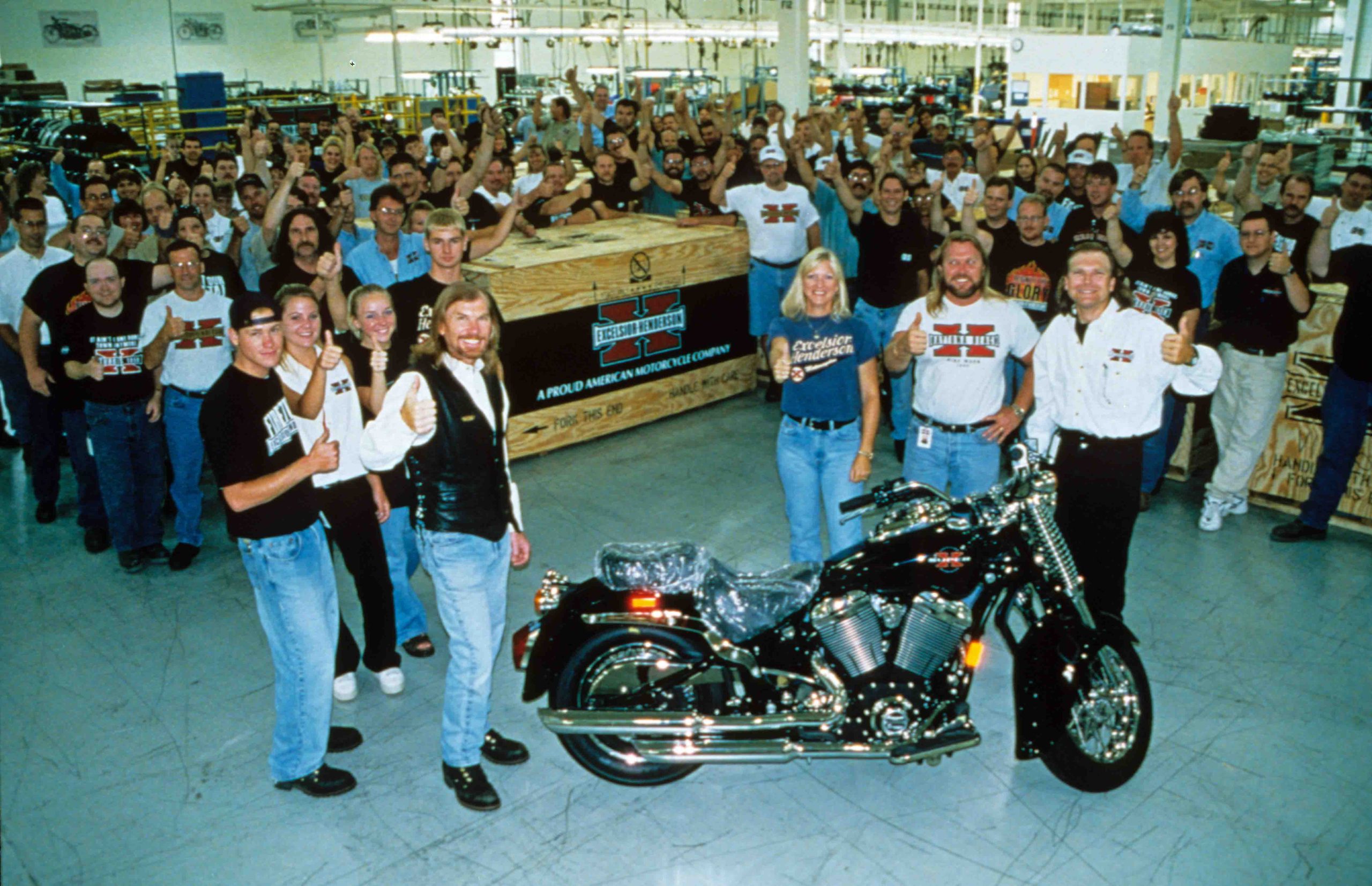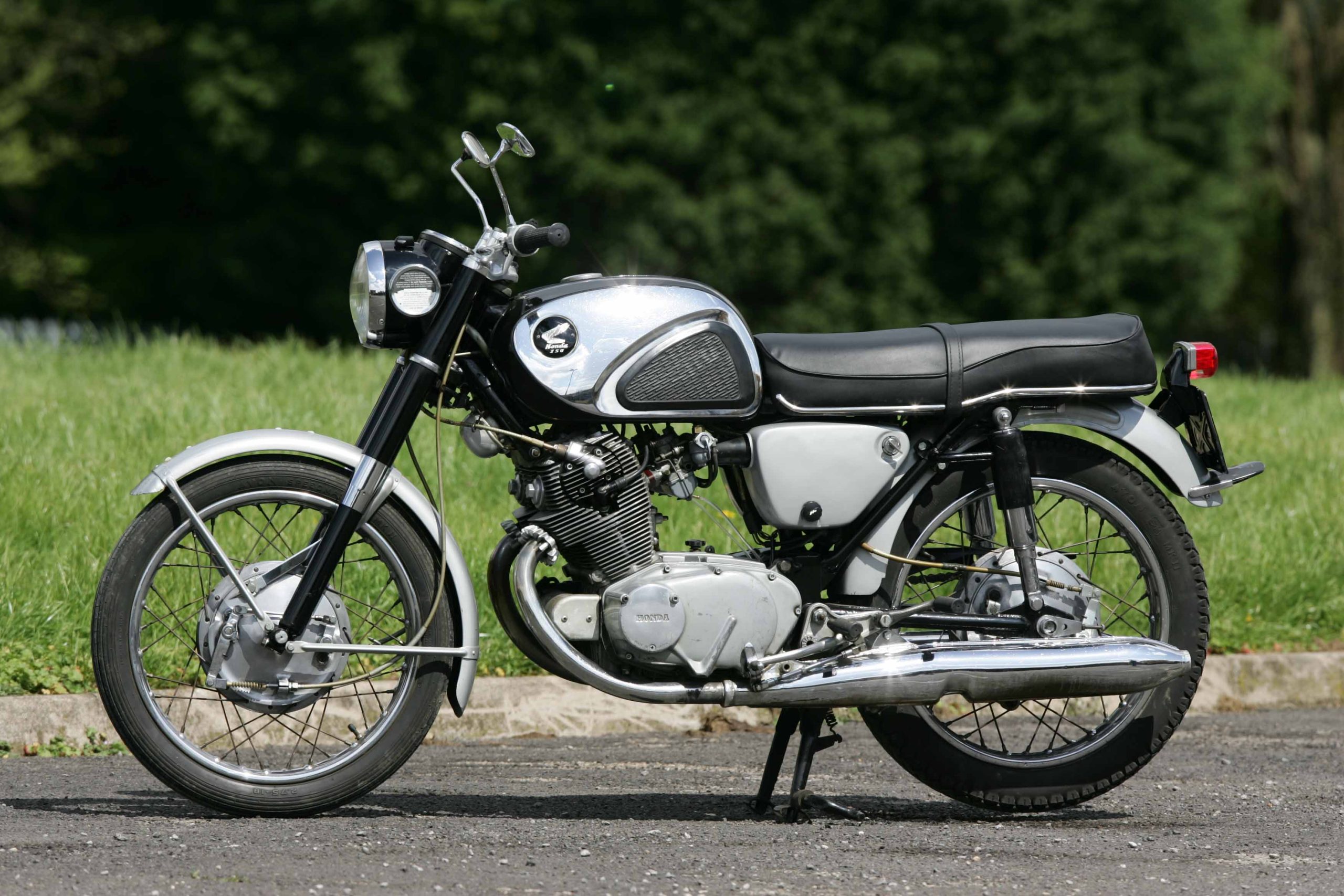The reborn firm’s debut model was a big, strikingly styled V-twin cruiser with a familiar double-barrelled name on its gas tank. A quarter of a century ago, it was launched with great fanfare to begin a new era for one of America’s oldest and most famous motorcycle marques.
But far from returning a legendary brand to health and prosperity, the Excelsior-Henderson Super X of 1999 proved a short-lived failure. Less than a year after its high-profile debut, the Super X was no longer in production, and the factory that had been built to assemble it was silent. One of Harley-Davidson’s rivals in American motorcycling’s civil war had been routed, with the battle barely commenced.

Excelsior-Henderson’s future had seemed so much more positive a decade earlier, when Minnesota-based brothers Dan and Dave Hanlon, longtime bikers and successful businessmen, had decided to team up and create an American rival to Harley-Davidson.
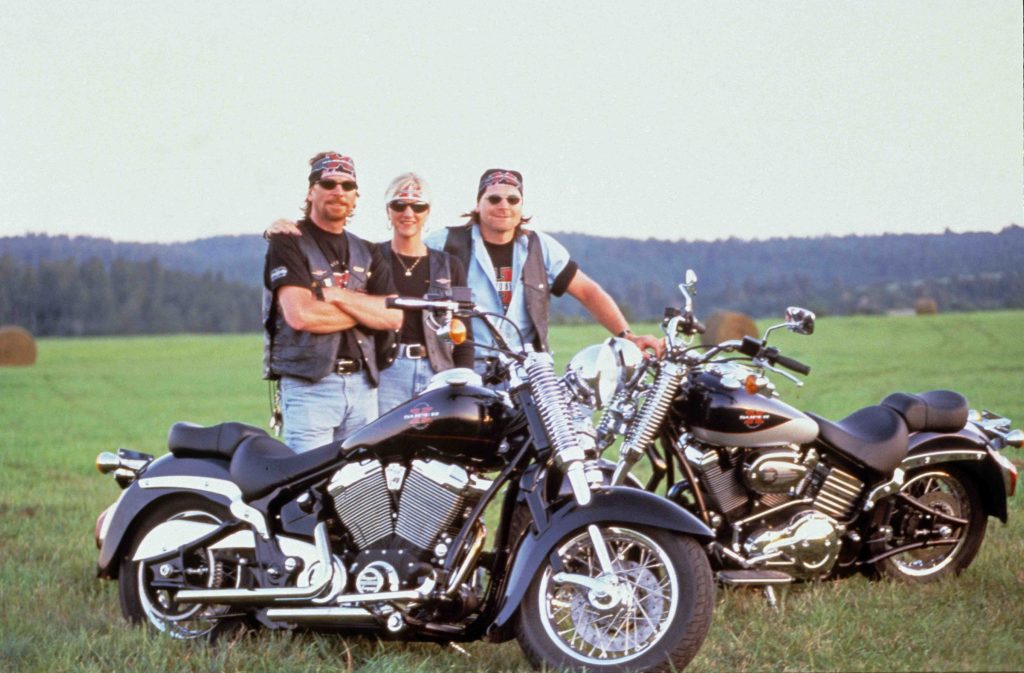
Their timing seemed immaculate. The rejuvenated Harley-Davidson was almost a decade into its relentless rise, following its 1980s management buyout and launch of the Evolution V-twins. Its much-improved range was so popular that the new breed of “Rich Urban Bikers” faced a year-long waiting list for some models.
Harley’s only potential rival looked like Indian, the Milwaukee firm’s oldest adversary, which had ceased producing its big Chief V-twins in 1953. The Indian brand name still resonated, but by the early 1990s its ownership was being contested in a series of legal disputes by some dubious characters who promised new bikes but showed no evidence of having the ability – or even the genuine intention – to produce them.
With Indian stalled, a revived Excelsior-Henderson seemed well placed to take up Harley’s slack. The marque didn’t have quite the cachet of Indian, but it had plenty of history, having been one of America’s “Big Three” along with Harley and Indian in motorcycling’s early years.
Excelsior-Henderson was formed in 1917 when the Henderson firm, famous for its sophisticated in-line fours, was bought by Schwinn. The bicycle firm already owned Excelsior, whose notable models included the original Super X, a classy 750cc V-twin first built in the mid-1920s.
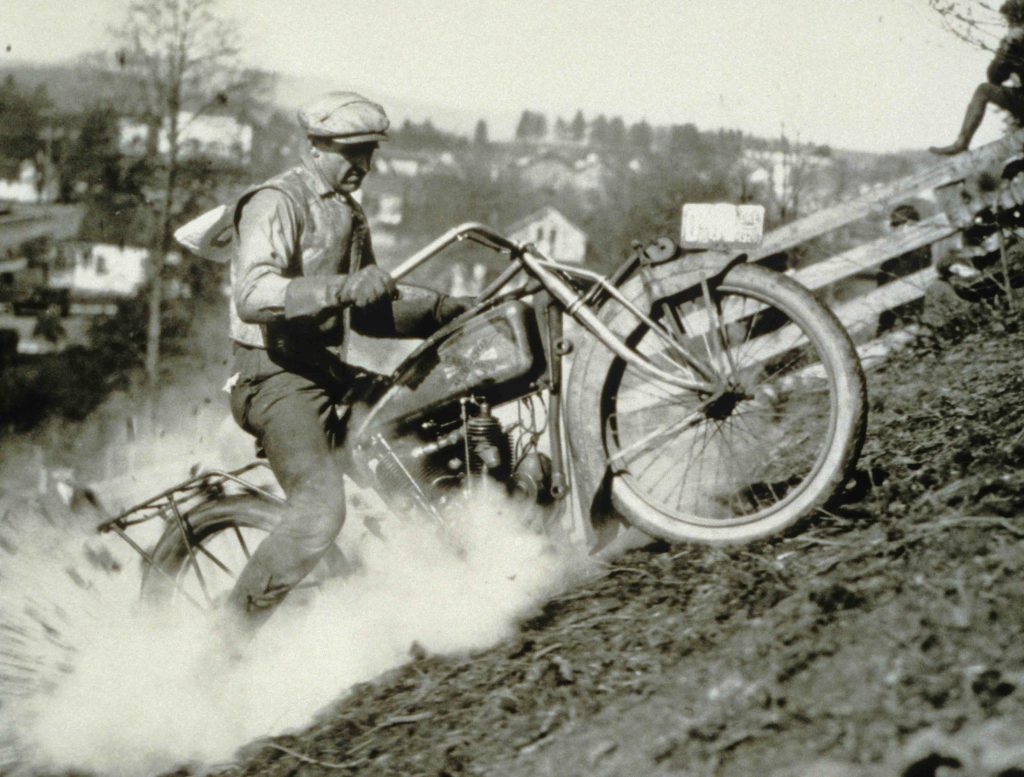
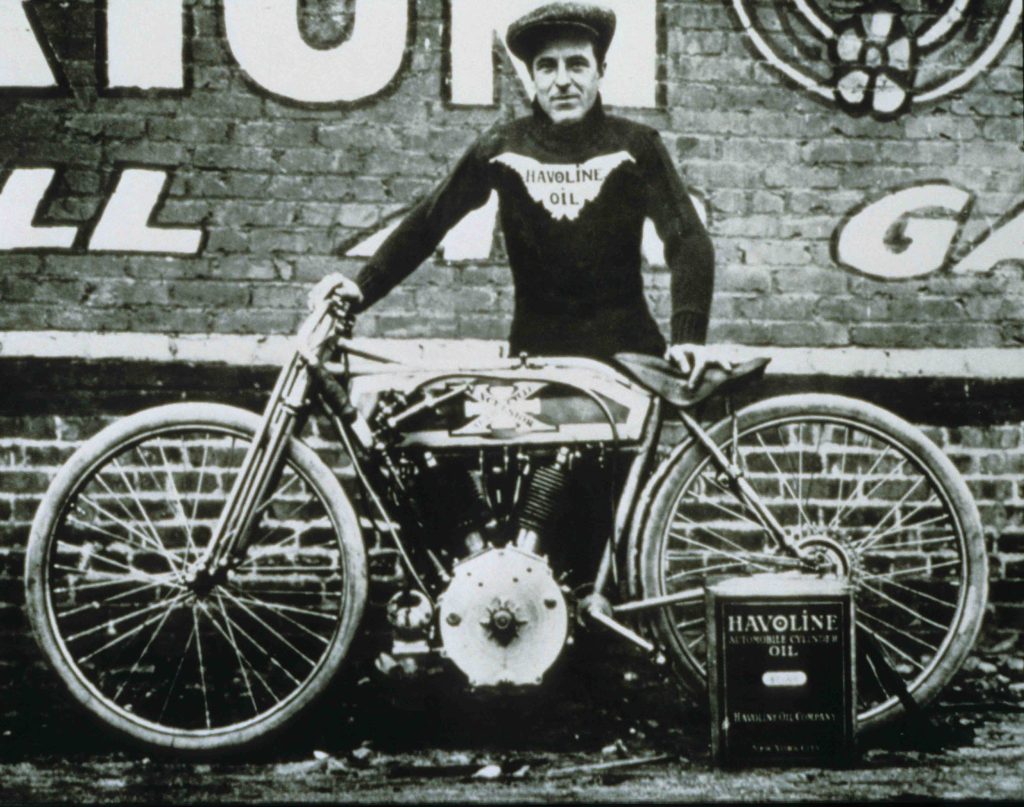

The resultant Excelsior-Henderson’s Chicago factory was the largest motorcycle facility in the world, famous for its rooftop test-track. Celebrity owners of its luxurious, expensive bikes included Henry Ford and flying ace Charles Lindbergh.
But the Depression of the early 1930s hit sales, as did the growing popularity of cheap cars such as Ford’s Model T. In 1931, company owner Ignaz Schwinn, who was 70 years old, stunned the industry when he abruptly halted motorcycle production and retired. The Excelsior-Henderson name had remained unused for decades when Schwinn ceased trading in 1993.
By chance, it was shortly before this that the Hanlon brothers decided to get serious about creating a new motorcycle company, and they sought a suitable old name. Dan had recently sold his business, which made bio-degradable packaging, and Dave had given up his job as senior manager of a truck-leasing firm to join him, along with Dave’s wife Jennie.
Having acquired the rights to Excelsior-Henderson, they required financial help to put their plans into action. “The investment required is $20–$30 million, so we need a serious backer,” admitted Dave Hanlon, when I called at their small Minneapolis office in 1995. “If we don’t find the money immediately, we’ll do what every company from Harley-Davidson to General Motors has done – and that’s keep trying.”
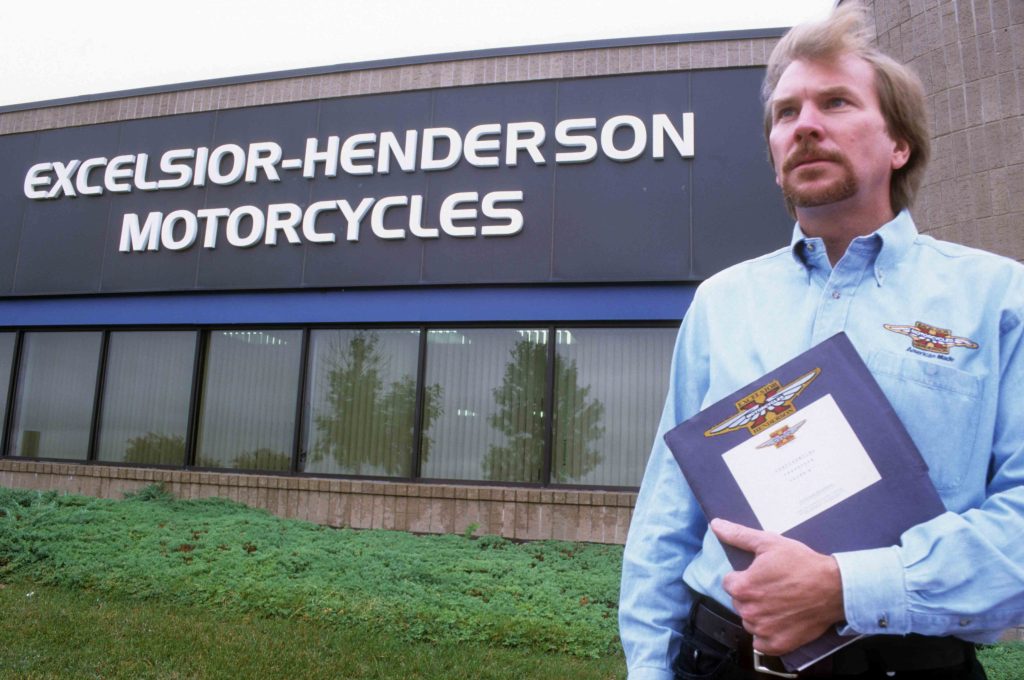
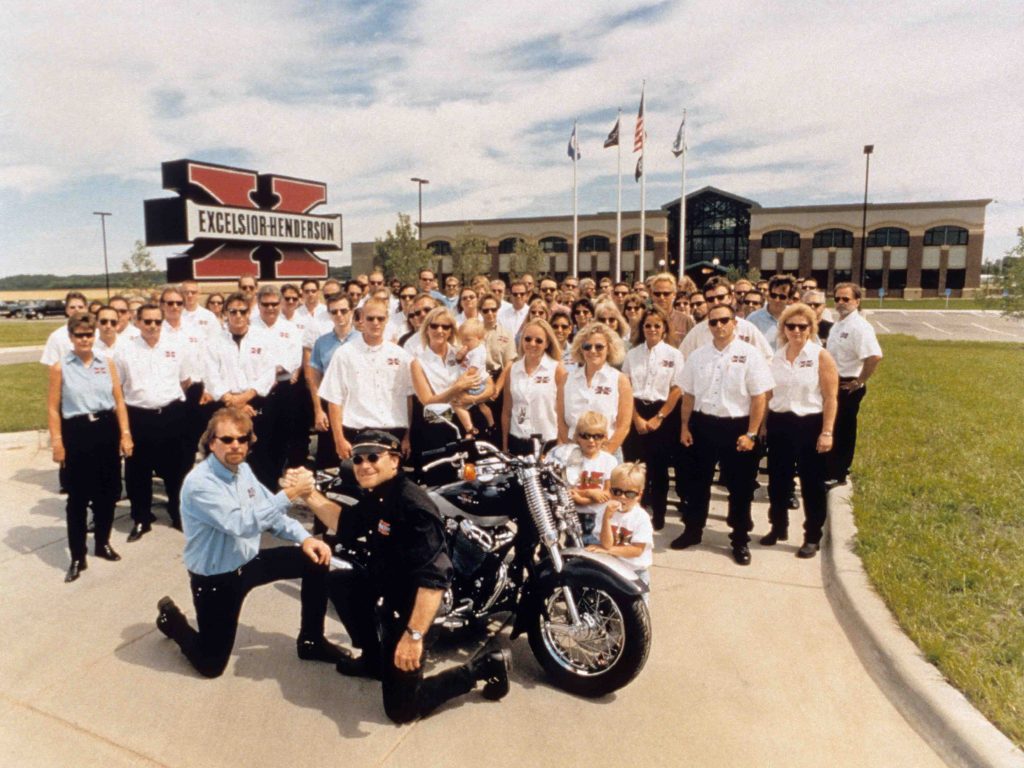
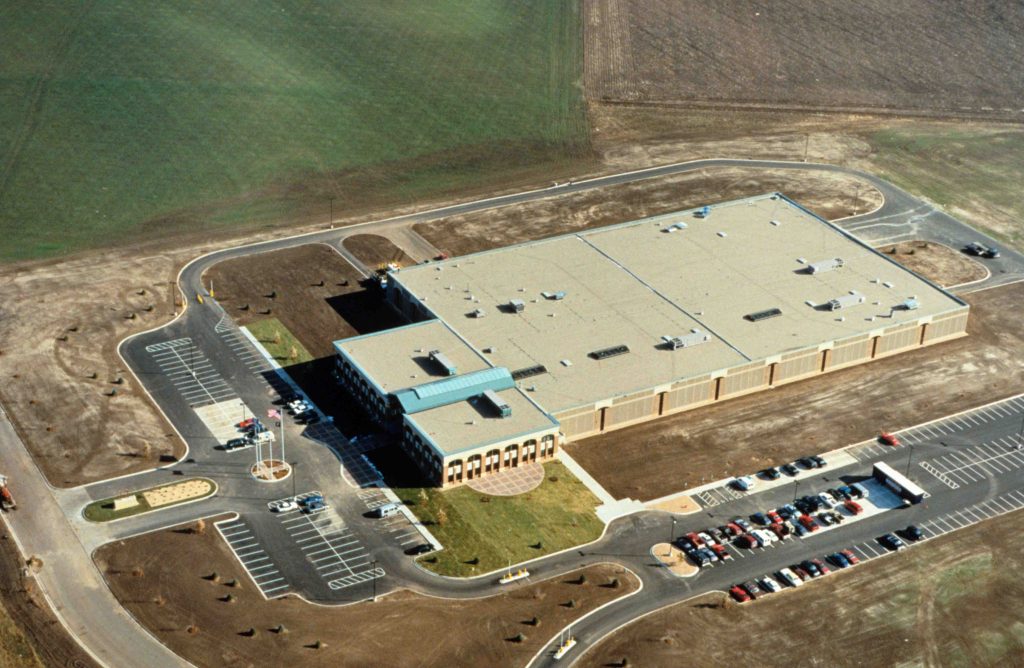
Helped by the feel-good factor generated by Harley’s rise, the Hanlons found the money. They raised approximately $100 million from private investors, state loans, and sale of stock in the company, in which they remained the largest shareholders. They developed an all-new bike and invested $30 million in a purpose-built factory in Belle Plaine, Minnesota, five miles from the farm where the brothers had grown up.
The Super X, whose engine was developed in conjunction with Weslake Engineering of Britain, was an air-cooled, 1386cc V-twin cruiser. Its cylinders were set at 50 degrees, rather than the 45-degree angle shared by the old Super X and new rival Harley-Davidson. Being seen not to copy Milwaukee was regarded as vital.
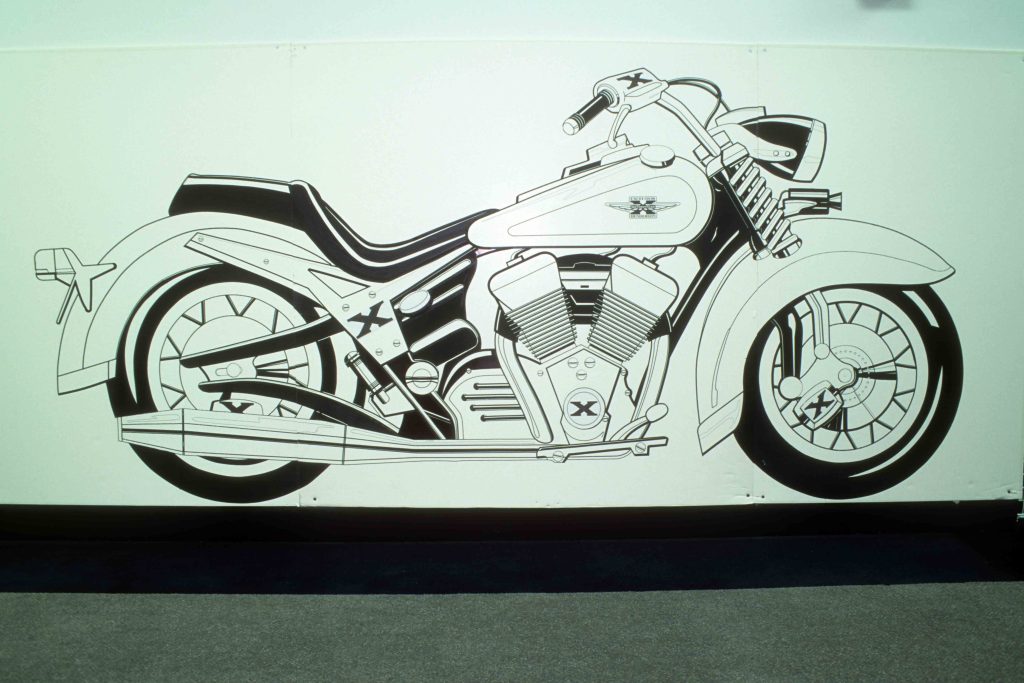

The “X-twin” motor, as it was named, also differed in having its induction on the left, and a side-by-side instead of forked con-rod layout. By cruiser standards it was quite high-tech, featuring fuel injection (by French firm Sagem, who also supplied Triumph) and four valves per cylinder, opened by twin overhead camshafts.
The Super X was long, low, and chunky. Its distinctive look was dominated by leading-link forks, whose legs passed through the front fender, and which incorporated exposed springs similar to those of its 1920s namesake. Other echoes of the old model included the frame’s front downtubes, which followed the line of the front fender, and the chromed instrument panel set into the top of the fuel tank.
Even the tank’s indentations in its lower edge on the right side, above the cam covers, were reminiscent of similar shapes designed to clear the exposed valvegear of early Excelsiors. Paintwork was glossy and thick, as befitted a bike which, with a base price of $17,950 on its launch, cost very nearly as much as Harley’s top-of-the-range Ultra Classic Electra Glide.
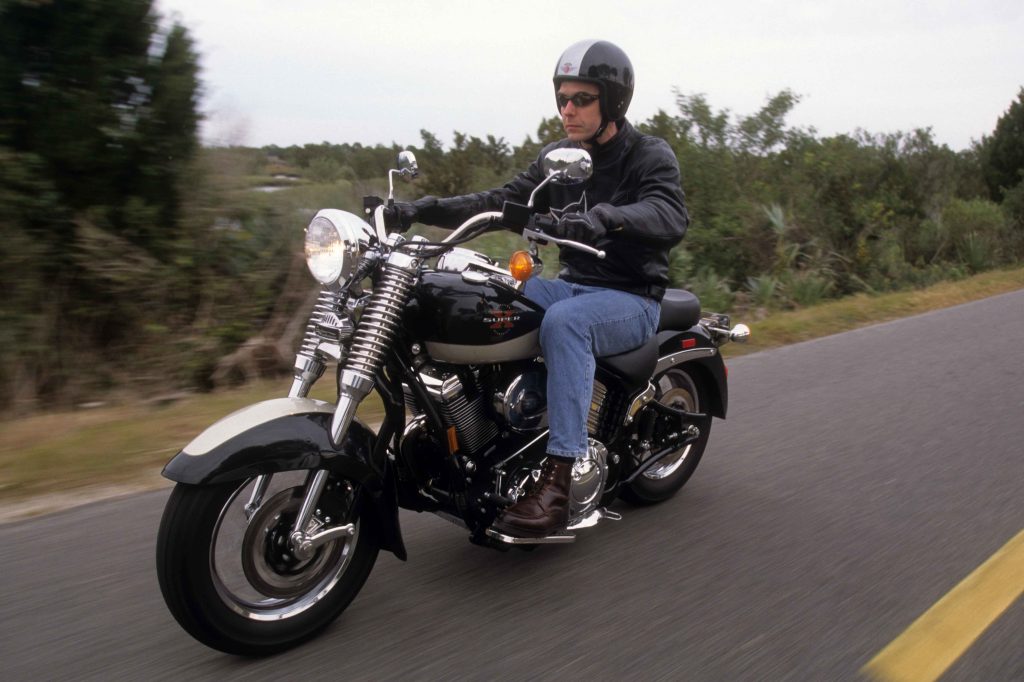
My chance to ride it came during Daytona Bike Week in March 1999. Despite its distinct architecture, the big V-twin engine sounded much like the majority of Harleys on the Florida roads as it fired up with a blam from the free-breathing accessory silencers. The riding position was typical heavyweight cruiser, too: wide, quite high bars, a low seat, and my feet stretched forward to footboards.
Once I’d cleared the Daytona traffic it was obvious that the engine was seriously torquey. Cracking open the throttle sent the Super X charging forward with as little as 1500rpm showing on the small tach that was set alongside the larger speedometer. By 2000rpm it was well into its stride, accelerating with a machine-gun exhaust bark and enough force to make those high bars wrench my arms.
Peak power output was a fairly modest 65bhp, but this was every bit as much a low-revving motor as a typical pushrod V-twin from Milwaukee. It responded best to short-shifting through a five-speed gearbox that was hindered in town by an occasionally hard-to-find neutral.
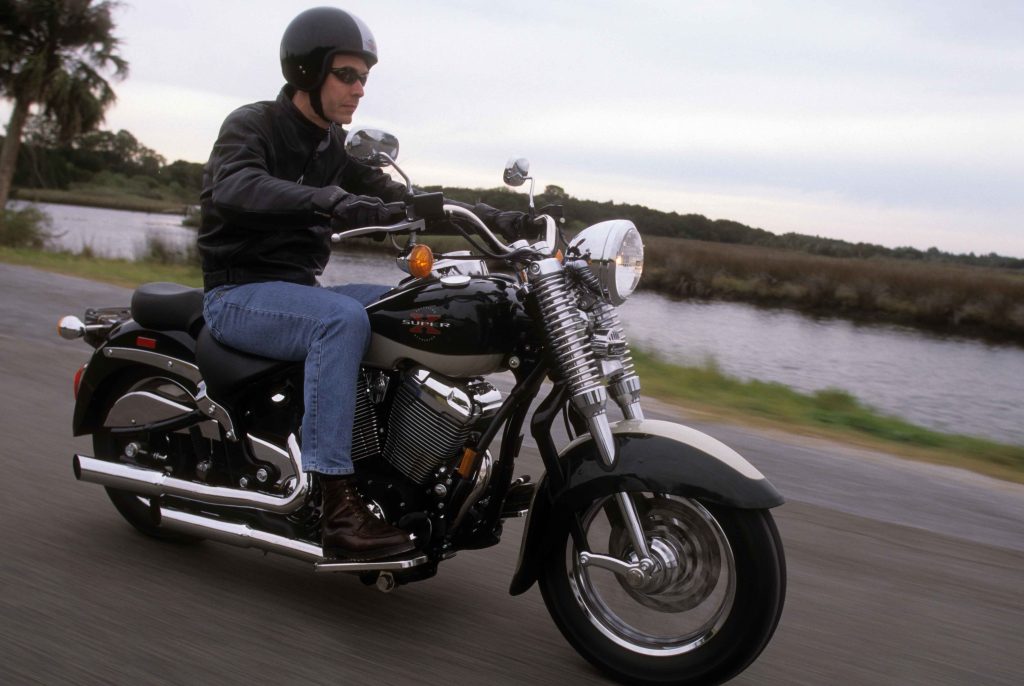
The engine had no balancer shaft and was rubber-mounted, which didn’t prevent it from vibrating enough at most engine speeds to confirm that I was riding a big V-twin. The Super X was at its smoothest at 70mph, with just under 3000rpm on the tach in top gear. By 3500rpm, still 2000rpm short of the redline, it was shaking noticeably through the bars and seat.
That slightly lumpy feel gave the Super X some character, and its chassis performed respectably well. It was a big, heavy bike, weighing over 300kg and with a lengthy 1598mm wheelbase. But that weight largely disappeared on the move. Although the bike required a firm shove to make it change direction, once into a turn it trundled round just fine.
That unusual leading-link front end was entertaining to observe on the straights, as the springs rippled away over bumps. And it worked well, giving a pleasantly soft ride yet refusing to dive even when the surprisingly powerful single front disc brake was used hard.
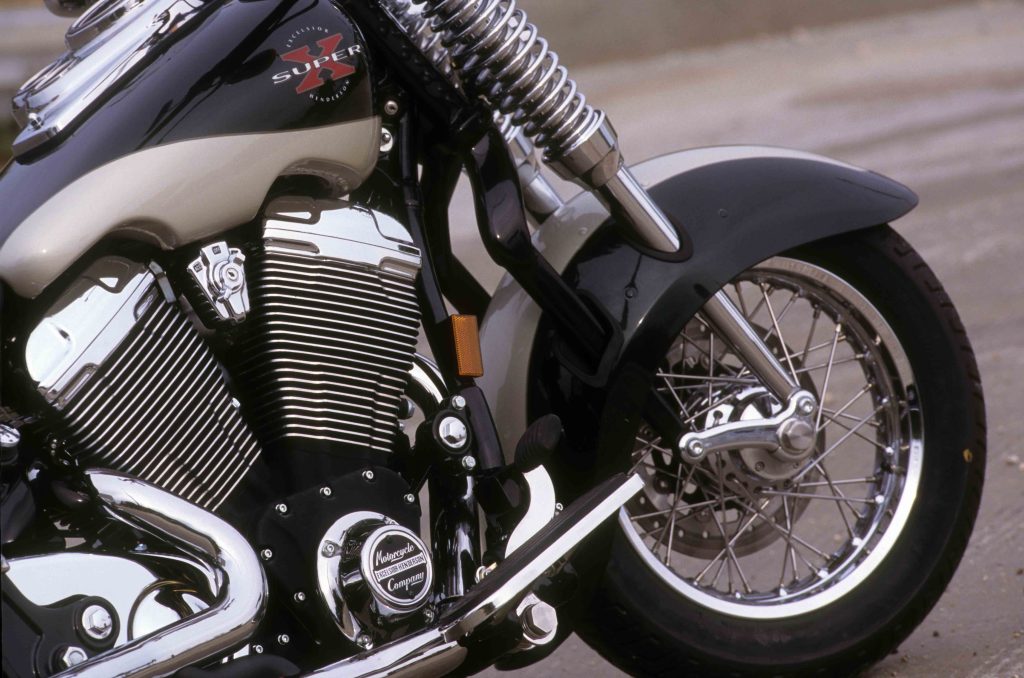
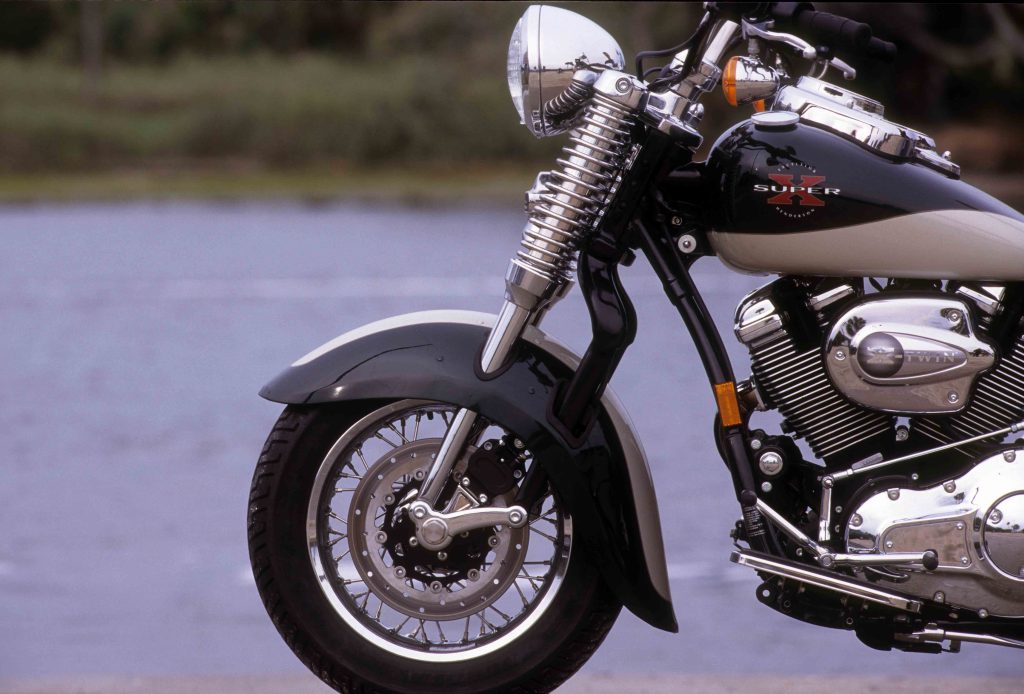
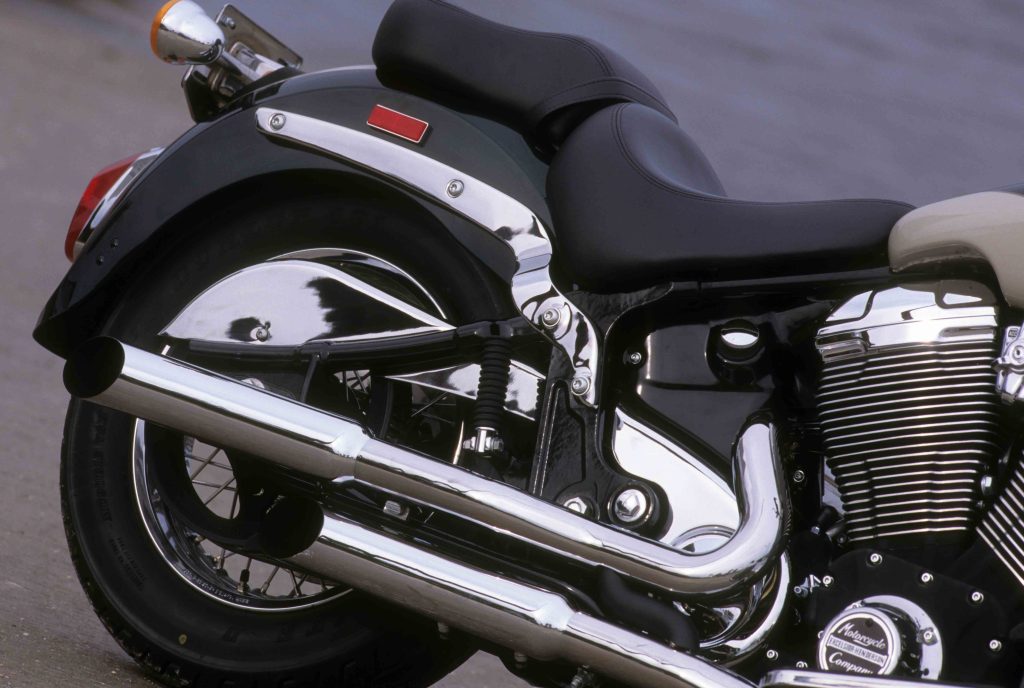

Stability and handling were good, and although the footboards scraped fairly early in bends, they at least gave a loud warning before anything solid touched down. The single-shock rear end worked pretty well, too, giving a soft ride yet coping with that weight plus the torque being fed through the final drive belt.
I ended my ride with a Florida freeway blast that allowed me to let the Super X stretch its legs, starting with a demonstration of its smooth, laid-back cruising ability at an indicated 70mph. When I wound the throttle wide open and held on tight, the big V-twin engine roared, the bars began vibrating and the Super X charged to an indicated 100mph with more to come.
By the time I got back to Excelsior-Henderson’s Daytona base I was impressed by the Super X, which had revealed surprisingly few glitches for an all-new debut model. It was distinctive, its all-round performance was sound, and its makers’ confidence that it could snatch a lucrative slice of America’s V-twin market was easy to understand.
Unfortunately for the Hanlons, that market was much more crowded and hostile in 1999 than it had been when they had hatched their plans at the start of the decade. Harley-Davidson had improved its bikes and its ability to build them, updating its plant in York, Pennsylvania, and opening new factories in Menomonee Falls, Wisconsin, and in Kansas City, Missouri, that had helped push production above 150,000.
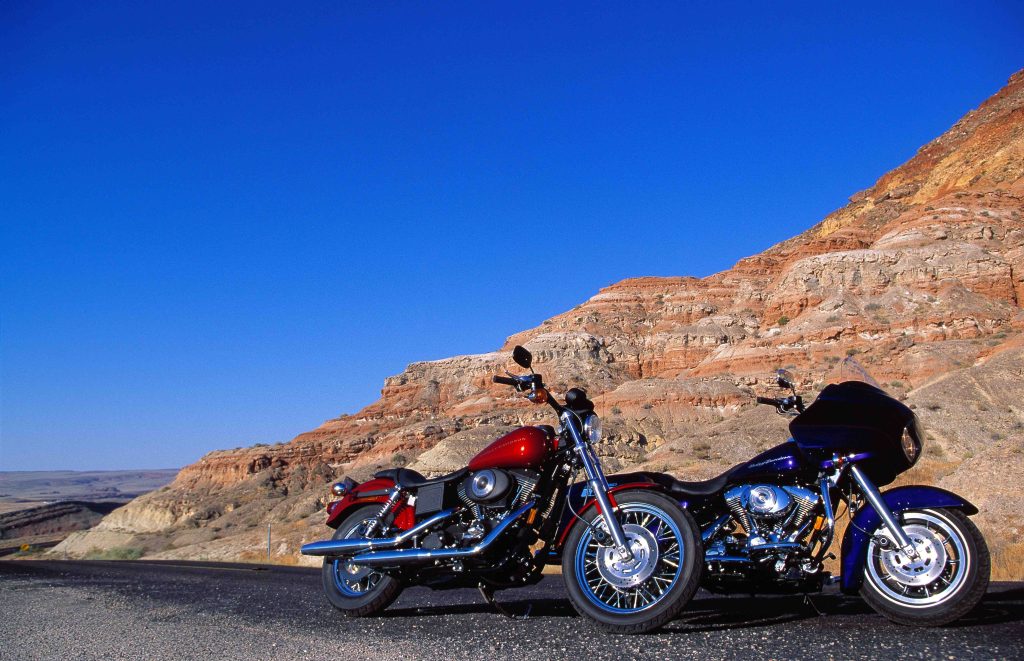
Numerous so-called “Harley clone” manufacturers had sprung up as well, building bikes around Harley Evolution-based V-twins from tuning firms including Wisconsin-based S&S Cycle. Many of the firms such as American IronHorse, Big Dog, and Titan focused on choppers and had become well established.
Excelsior-Henderson also found itself competing against two mainstream rivals with considerable resources. The previous year in Daytona, I’d ridden Victory Motorcycles’ capable and impressively engineered V92C cruiser, the model with which snowmobile giant Polaris had launched its attack on the two-wheeled market.

Even old rival Indian had been reawakened, after a bitterly contested legal saga that ended with a court in Denver, Colorado, awarding rights to a Toronto-based consortium. The new Indian Motorcycle Company had promptly taken over CMC (California Motorcycle Company), one of the biggest of the Harley clone manufacturers, and begun production of a 1442cc V-twin named the Chief Limited Edition.
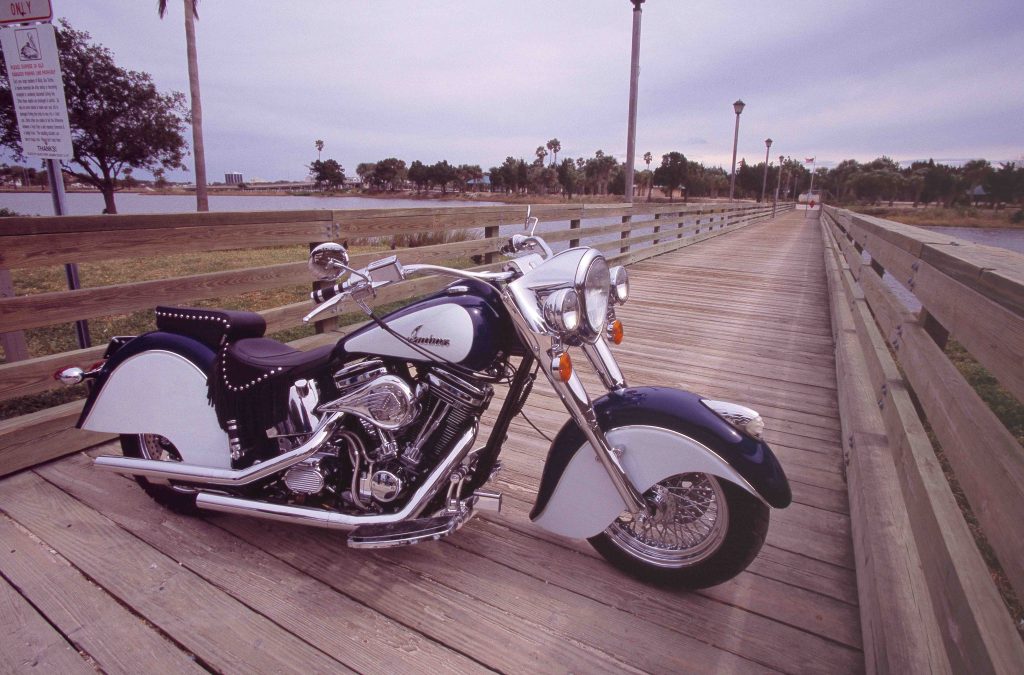
Excelsior-Henderson pressed on regardless. The Hanlons began Super X production in early 1999 and planned to build 4000 bikes in its first year, increasing the number to 20,000 within a few years. Having begun trading with 88 dealers across the United States, they rapidly grew the network to 130, and aimed to begin exports in 2001.
They also intended to broaden the range with a sportier cruiser, the American X, and a touring model. There were plans for a liquid-cooled inline-four that would have drawn comparison with the former Henderson four. But before the year ended, the hugely increased competition proved too much.
The numerous problems included difficulty with parts supply and a lack of suitable dealers, not helped by Harley-Davidson’s aggressive response. “I always thought business was tough, but I did not expect some of the blatant things, such as manipulation of vendors and dealers,” Dan Hanlon later reflected.
By December 1999, Excelsior-Henderson had produced almost 2000 bikes, but it was unable to raise the additional capital required and filed for Chapter 11 bankruptcy. An attempted revival, backed by a Florida-based investment group, failed a year later, and the firm was liquidated in 2002. The factory sat empty for several years, before being taken over by a company that makes quartz countertops.
Excelsior-Henderson faded from the scene, and an attempt to sell the brand at a Mecum auction in 2018 was unsuccessful. But in December 2020, the name was bought by Bajaj, the giant Indian manufacturer that has links with firms including Kawasaki, KTM, and Triumph.
India’s major manufacturers have gravitated toward historic marques in recent years, with Mahindra buying BSA, TVS acquiring Norton, and Hero partnering with Harley-Davidson. Bajaj has reportedly applied for rights to use its own famous double-barrelled name on motorcycles, parts, and clothing. Maybe, just maybe, the Excelsior-Henderson story has more chapters to come.
